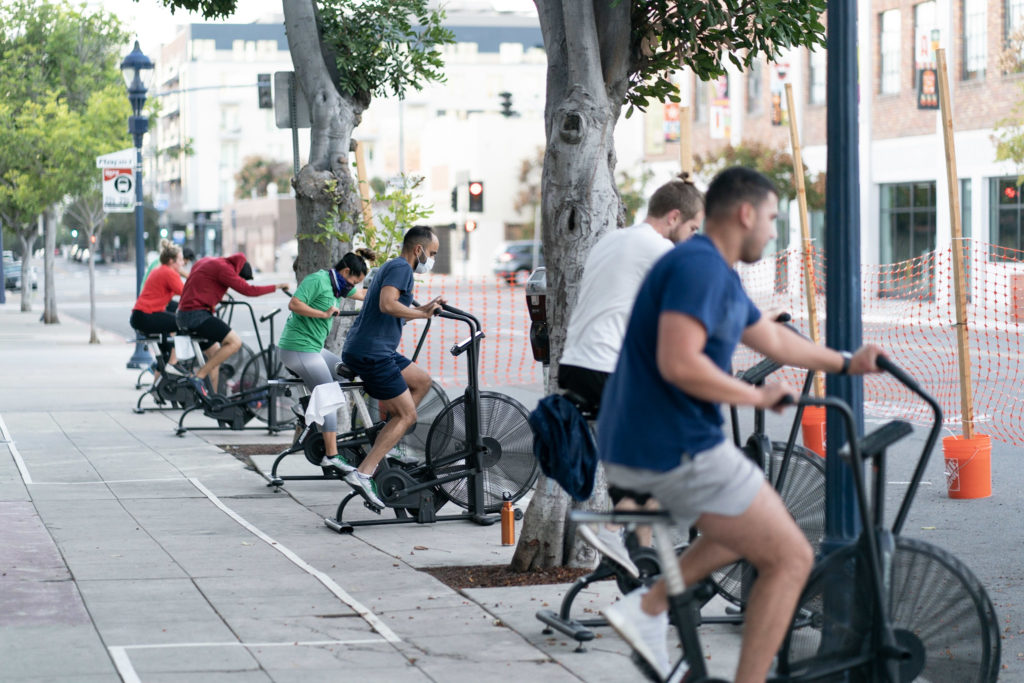
Fuel the Machine
Written by Tricia Moore
Whether it be stair workouts, running, biking, walking, hiking it all applies. More conditioning requires a shift in fuel.
Rule #1: Eat More of the right foods, not just more food…
During event training (5K, 10K, Half and Full Marathons) you are burning many more calories than you were before, and you need to replace them. Keep in mind, however, that your calorie burn will depend on your gender, size and the intensity of your workout. Then replace those calories with nutrient-rich food.
Looking to lean out a bit?
It may surprise you, but long distance running is not an effective weight loss plan. One mile of running burns about 100 calories, but that doesn’t mean you’ll lose a pound for every 35 miles you log. Running increases appetites, especially in new runners. And this phenomenon isn’t just a runner issue, increase cardiovascular conditioning and you may experience an increase in appetite. The body seems to want to maintain its weight homeostasis and will pump out hormones that prompt athletes to want to eat. If you are not trying to lose weight, by all means respond to those signals by eating more, but if you wish to lose weight, you have to be aware of how many calories you burn and the types of calories you consume.
If you do find the scale creeping higher as you train, watch your calorie intake and make sure to read rule #2.
Rule #2: Fight the Hunger
You may feel hungry when you are training for an event, a feeling commonly called “runger” within running circles. However, if you feel hungry all the time, it’s time for a dietary change to make sure you can go longer without feeling hungry between meals. If hunger or general lack of energy is an issue, ask yourself these questions:
Are you getting enough protein and yes carbs too? Carbs have long been seen as the holy grail to fast running, but protein is important because it stabilizes your blood sugar and helps you feel fuller longer. Ya need both!
When are you eating enough before a run? If so, is it helping or hurting? Are you training in a fasted state? Again is it helping or hurting? Each person is different and some only prefer to train on an empty stomach while others need a bit of fuel about an hour before. Explore what works for you.
Are you eating often enough? If you are hungry after eating three meals, try spacing out the same amount of food into five smaller portions instead. The steadier input of food will help your body maintain stable blood sugar levels and stave off hunger. Also, have a variety of healthy snacks on hand so you don’t turn to calorie-laden food when you are hungry. Think a handful of nuts, a cup of applesauce or a banana. Portions matter.
Rule #3: Try and Try Again
Be open to change, evaluate how meal types and timing feel. What foods make you feel good and vice versa. Sure, food is fuel, but we’re not built on an assembly line. Throughout your training, try eating different types of foods and alter their timing little by little to see what works best.
Rule #4: Think of Food as Fuel
Just as gasoline powers a car, food powers your training. The right kind of fuel will help your engine run strong as you log your miles. The wrong fuel can hold you back, either through slower times or digestive distress.
Now that you better understand how to shift your fuel for more endurance-based training, where do you think you can make some changes or additions to increase your gains and meet your goals? Need some personalized attention? We offer online nutrition coaching to help you create a plan with action steps and accountability.

nice !!!